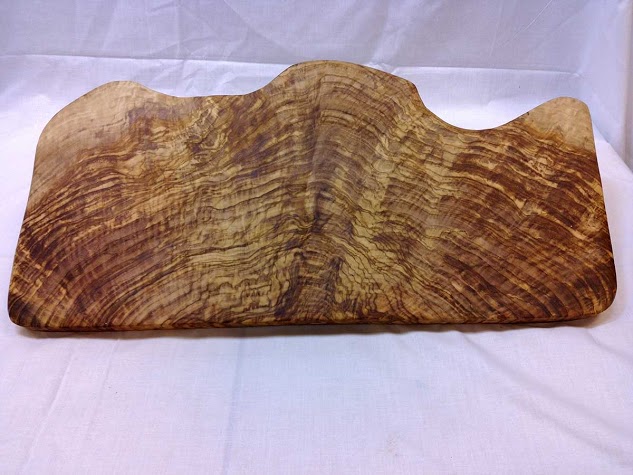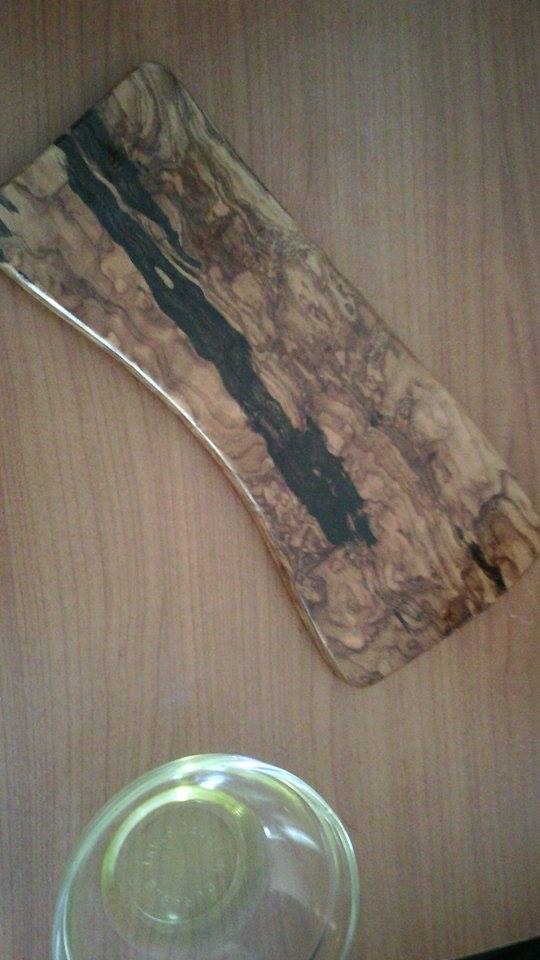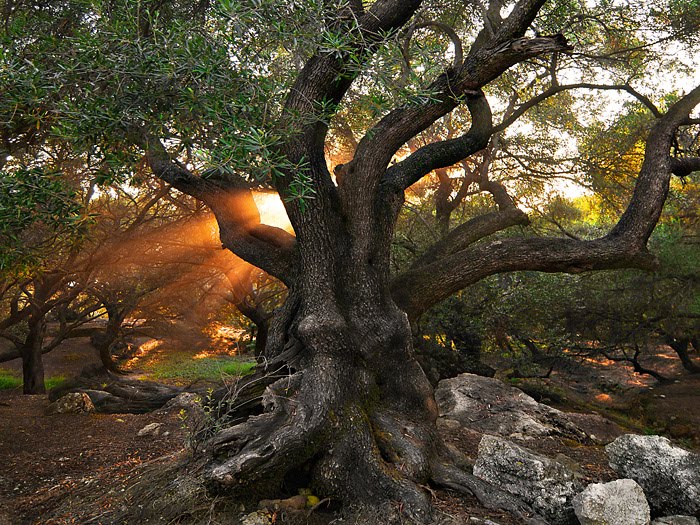Olea europaea – the one about the wood

Olea europaea – the one about the tree
07/01/2016
How to clean olive wood utensils
21/01/2016A thick, strong,  irregular trunk with knotted branches. The leaves are dark green and turn into silver under the sunlight. This is what the olive tree looks like, when we look at it. But I want this post to be about the wood, about what we cannot see, about the scent it has, the feel we get when we touch it, about the different colours and grain patterns.
irregular trunk with knotted branches. The leaves are dark green and turn into silver under the sunlight. This is what the olive tree looks like, when we look at it. But I want this post to be about the wood, about what we cannot see, about the scent it has, the feel we get when we touch it, about the different colours and grain patterns.
To begin with, it is very common to see many different colours on pieces of olive wood, and this happens due to the fact that they come from different parts of the tree. For example, the branches and the trunk usually have a golden yellow colour with few darker lines. But, when we move toward the root, the wood becomes darker and with more intense grain patterns. The grain patterns, also, depend on the type of the olive tree. There are some that have lines, other have ring designs and some other completely irregular patterns that transform into a natural mosaic, all of them telling the story of tree on earth.
A really fascinating characteristic is this fruity, sweet scent of the wood. I unconsciously take a piece of wood in my hand, let it be a chopping board or a mortar and pestle, it doesn’t matter, and I smell it. It a very strong, very fresh scent.
But beauty is not the only thing that makes olive wood so special. Its durability and antibacterial properties make it an exceptional choice for our kitchen, for cooking spoons, chopping boards, spatulas, whatever we use for cooking and preparing the food.  Olive wood, especially with the right preparation, has no pores and thus it’s very easy to clean it and treat it with olive oil or bee wax.
Olive wood, especially with the right preparation, has no pores and thus it’s very easy to clean it and treat it with olive oil or bee wax.
What I really tell people when they come in my shop is to take a piece of wood in their hands, pass their hand over its surface and just feel the wood. And then watch it carefully, see the unique patterns, so as to find the one that fascinates them. And, finally, smell it. Smell the wood and the olive oil and the nature inside it.




